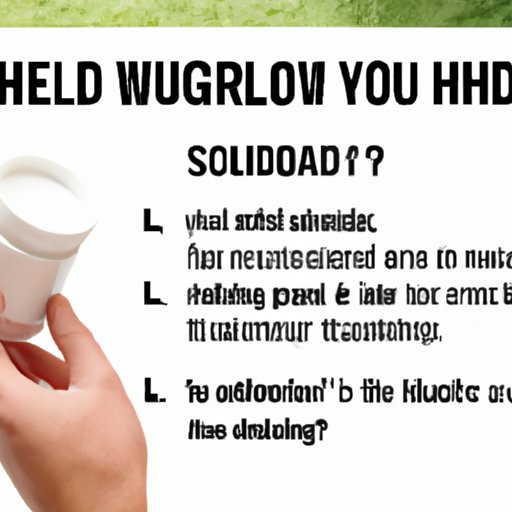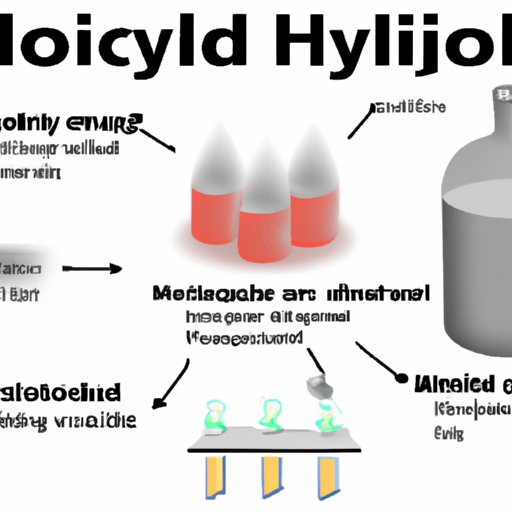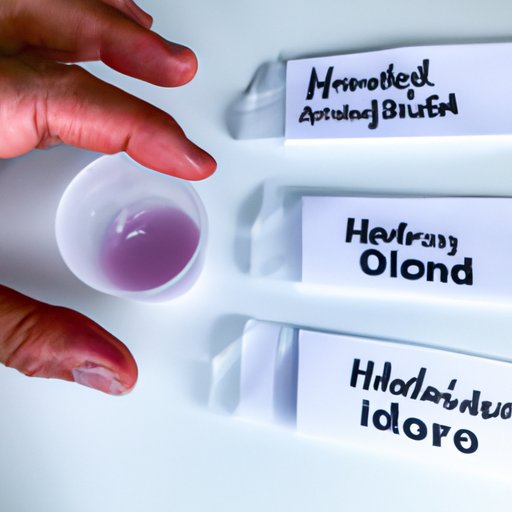Introduction
Hydrocolloid is a type of material used in medical bandages and wound dressings. It has been around since the late 1960s and is widely used today due to its effectiveness in wound healing. In this article, we will explore how hydrocolloid works and its various uses and benefits.
Exploring the Science Behind Hydrocolloid Bandages
Before we dive into understanding how hydrocolloid works, let’s take a look at what it is and the components that make up a hydrocolloid bandage.
What is a Hydrocolloid?
A hydrocolloid is a material composed of a gel-like substance made from natural or synthetic polymers. This gel-like material is used in medical bandages, wound dressings, and other products due to its ability to absorb moisture, form a protective barrier, and promote healing.
What are the Components of a Hydrocolloid?
The components of a hydrocolloid bandage usually include an adhesive layer, a cushioning layer, and a backing layer. The adhesive layer sticks to the skin and helps keep the bandage in place. The cushioning layer provides comfort and protection, while the backing layer acts as a barrier against bacteria and other contaminants.
How Are Hydrocolloids Different from Other Wound Dressings?
Hydrocolloids are different from traditional wound dressings because they contain a gel-like substance that absorbs moisture and forms a protective barrier. This barrier helps to keep bacteria and other contaminants out, while also promoting a moist environment that is ideal for wound healing.
Understanding the Healing Properties of Hydrocolloids
Now that we understand the components of a hydrocolloid bandage, let’s take a look at the advantages and how it can help with wound healing.
What are the Advantages of Hydrocolloid Dressings?
Hydrocolloid dressings have several advantages over traditional wound dressings. They form a protective barrier that keeps bacteria and other contaminants out, while also allowing the wound to remain moist and promoting faster wound healing. Additionally, they are comfortable to wear and can be left on for days at a time.
How Do Hydrocolloids Enhance Wound Healing?
Hydrocolloids create a moist environment that helps to accelerate the wound healing process. The gel-like material also helps to keep bacteria and other contaminants out, reducing the risk of infection. Additionally, hydrocolloids provide cushioning which helps to protect the wound and reduce pain and discomfort.

How Hydrocolloid Dressings Aid in Wound Care
Now that we know the advantages of hydrocolloid dressings, let’s take a look at how to use them for wound care.
How to Use Hydrocolloid Dressings
Hydrocolloid dressings should be applied directly to the wound according to the manufacturer’s instructions. The dressing should be changed every few days or as needed. It is important to keep the wound clean and dry, and to avoid rubbing or scrubbing the area.
What are the Benefits of Hydrocolloid Therapy?
Hydrocolloid therapy has several benefits, including faster wound healing, reduced risk of infection, and improved comfort. Additionally, hydrocolloid dressings can be left on for days at a time without the need to change them, making them more convenient than traditional wound dressings.
What are the Risks of Hydrocolloid Therapy?
Although hydrocolloid therapy is generally safe, there are some risks associated with it. These include skin irritation, allergic reactions, and infection. It is important to follow the manufacturer’s instructions when using hydrocolloid dressings and to consult a doctor if any adverse reactions occur.

An Overview of Hydrocolloid Technology
Hydrocolloid technology has come a long way since its introduction in the late 1960s. Today, there are many different types of hydrocolloids available, each with its own unique properties.
What Different Types of Hydrocolloids are Available?
There are several different types of hydrocolloids available, including alginates, carboxymethylcellulose, polyvinyl alcohol, and polyacrylates. Each type has its own unique properties, such as absorption rates, adhesion strength, and flexibility.
How Have Hydrocolloid Technologies Evolved Over Time?
Hydrocolloid technologies have evolved over time to become more effective and efficient. For example, new hydrocolloids have been developed that offer higher absorption rates, better adhesion strength, and greater flexibility. Additionally, new technologies have been developed that allow for the customization of hydrocolloids to meet specific needs.

Comparing Different Types of Hydrocolloid Dressings
Now that we’ve discussed the different types of hydrocolloids available, let’s take a look at how they compare to traditional wound dressings.
What are the Differences Between Hydrocolloid and Traditional Wound Dressings?
Hydrocolloid dressings are different from traditional wound dressings in several ways. Hydrocolloids form a protective barrier that keeps bacteria and other contaminants out, while also promoting a moist environment that is ideal for wound healing. Additionally, hydrocolloids are more comfortable to wear and can be left on for days at a time.
What are the Advantages and Disadvantages of Each Type of Hydrocolloid Dressing?
Each type of hydrocolloid dressing has its own advantages and disadvantages. Alginates are highly absorbent but can be difficult to remove. Carboxymethylcellulose is flexible and easy to remove but may cause skin irritation. Polyvinyl alcohol is highly absorbent but can be difficult to apply. Polyacrylates are easy to apply but may not adhere well to some surfaces.
Conclusion
In conclusion, hydrocolloid is a type of material used in medical bandages and wound dressings due to its effectiveness in wound healing. Hydrocolloids form a protective barrier that keeps bacteria and other contaminants out, while promoting a moist environment that is ideal for wound healing. There are several different types of hydrocolloids available, each with its own unique properties. Hydrocolloid dressings are more comfortable to wear and can be left on for days at a time, making them more convenient than traditional wound dressings. Overall, hydrocolloids are an effective and efficient way to treat wounds and promote healing.
(Note: Is this article not meeting your expectations? Do you have knowledge or insights to share? Unlock new opportunities and expand your reach by joining our authors team. Click Registration to join us and share your expertise with our readers.)
